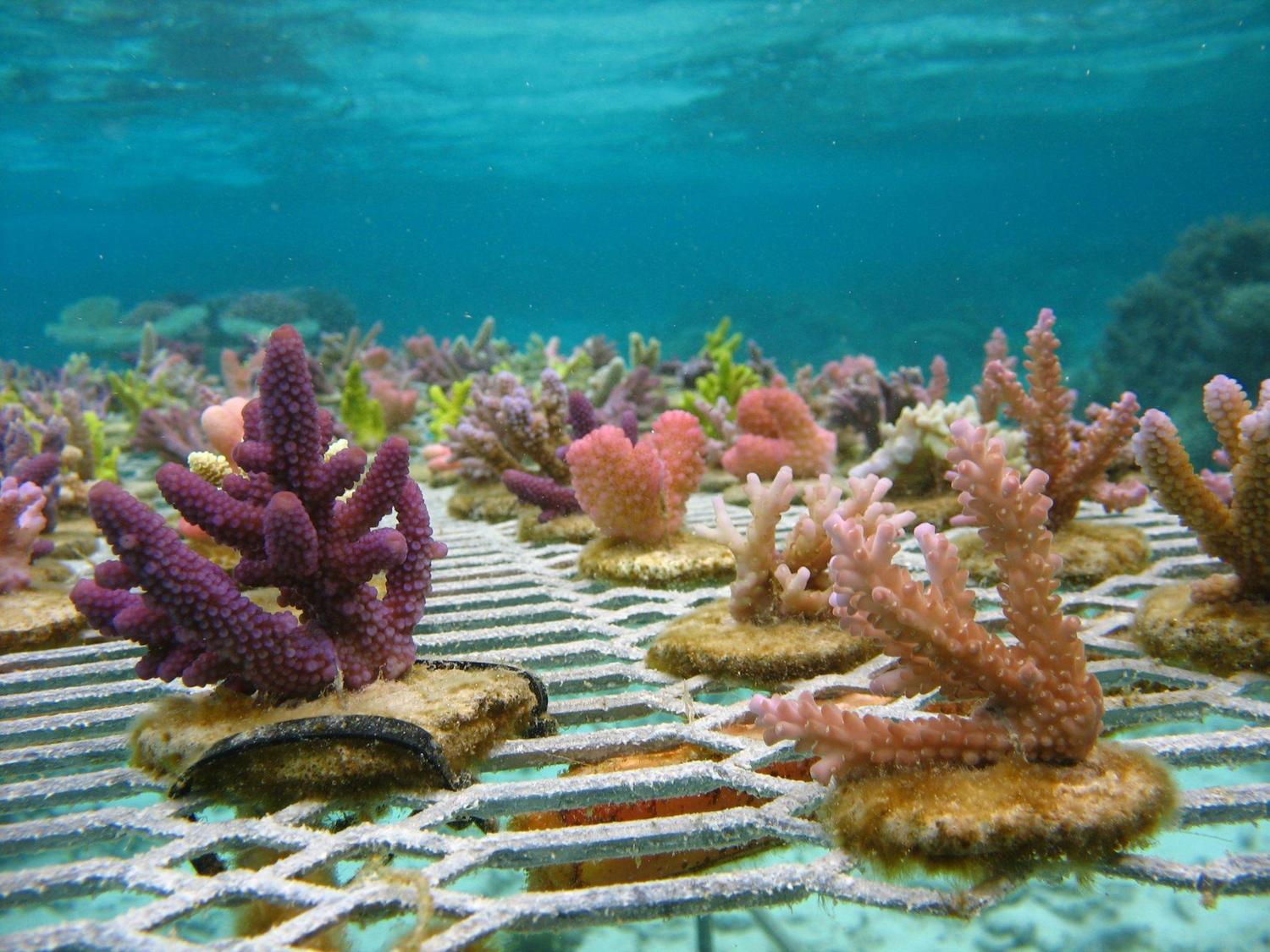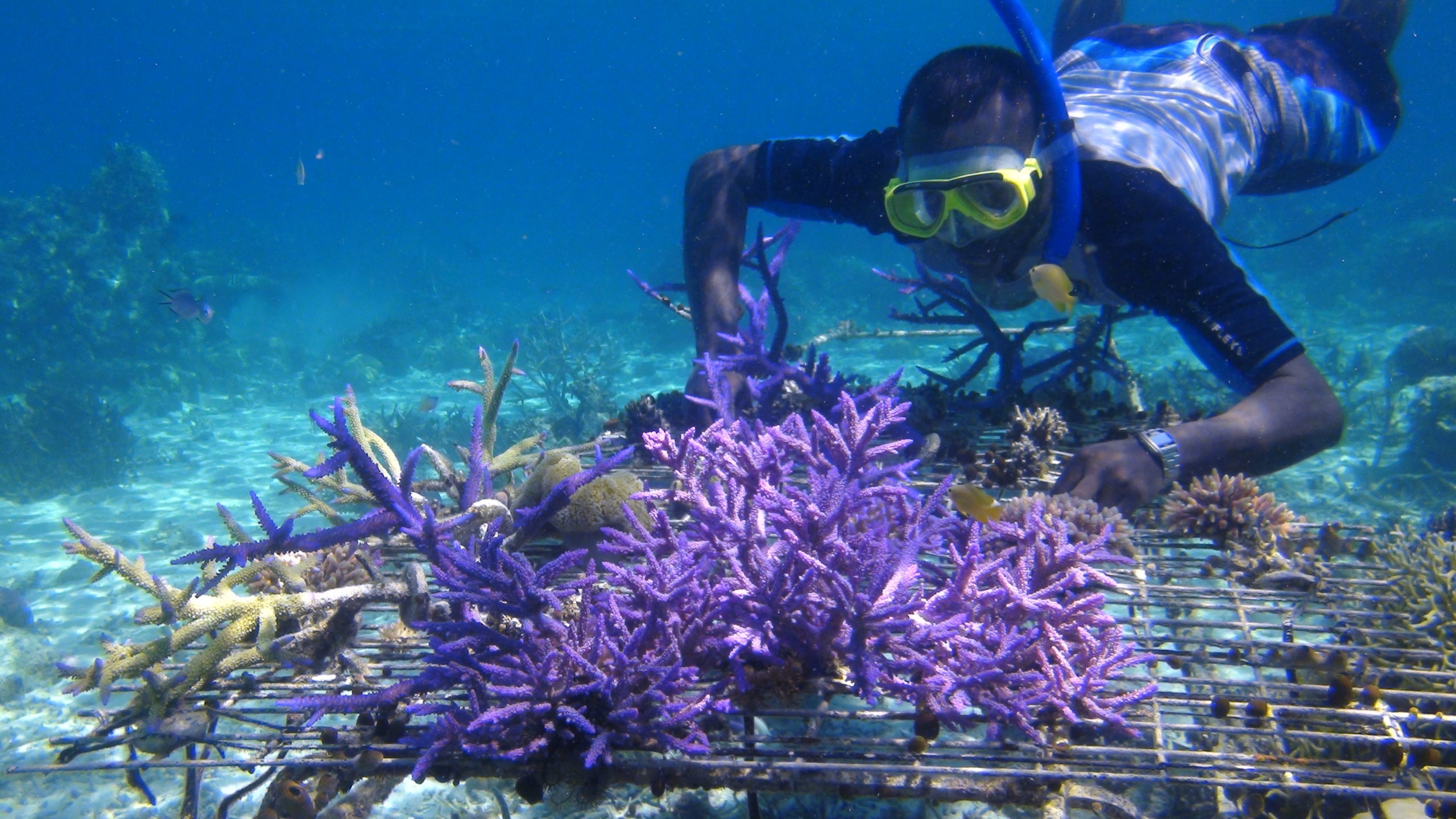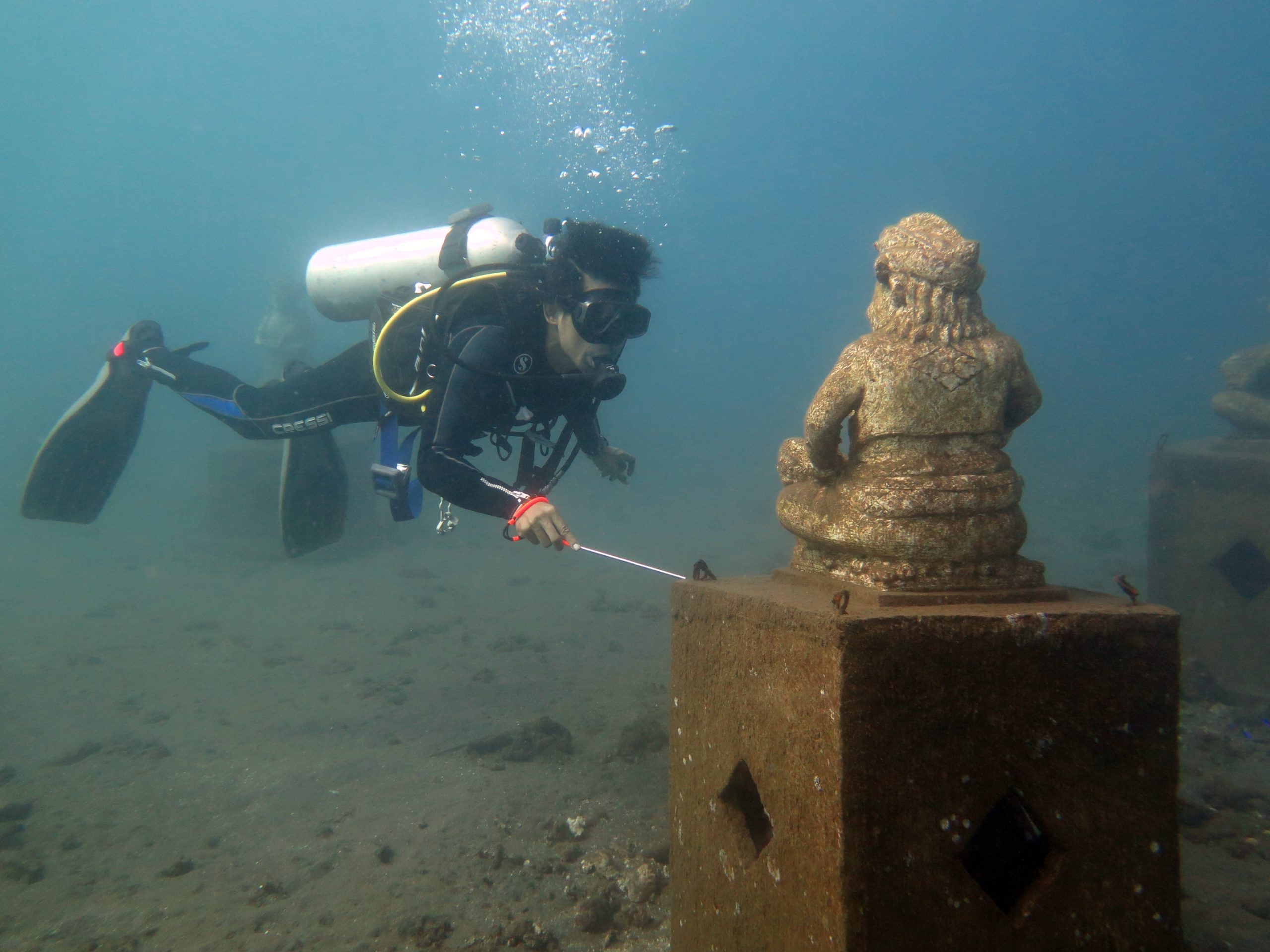Over the past few years, there’s been a steady increase and interest in a number of coral conservation activities that fall into the broad category of restoration. These include coral gardening, breeding corals in tanks and transplanting them onto reefs and growing corals on artificial reef structures in the water. At the Coral Reef Alliance (CORAL), we frequently get asked questions about restoration activities, so we thought we’d take a moment to explain some of the more common techniques, their potential benefits and disadvantages, and how CORAL is approaching restoration.
One of the most common approaches to restoration is to place artificial reef structures on the ocean floor on which corals can grow. In some cases—for example, when natural reefs have been bombed for fish or mined for building materials—this approach may be an essential tool for rebuilding reefs. This is the case in several locations in North Bali, Indonesia, where many of the natural reefs are severely degraded. In response, communities are installing a variety of rebar and concrete structures on the seafloor to provide a place for baby corals to settle and grow.

Unfortunately, deployment of these materials is haphazard, and sometimes, when they aren’t properly affixed to the seafloor, these structures become dislodged in storms and turn into wrecking balls, damaging natural reefs. At the request of these communities, CORAL is launching a new project that involves in-water testing of three common restoration materials. Our goals are to identify which approaches are best for rebuilding reefs and use this information to improve coral restoration techniques in North Bali and beyond.
Another popular restoration technique is to grow corals in aquaria and out-plant them onto natural or artificial reefs. However, there remain a lot of questions about whether this and similar approaches are scalable due to their high implementation costs. If the goal of restoration is to repopulate degraded reefs, it’s likely that lots and lots and lots of corals will need to be out-planted to have a positive impact on the natural ecosystem. For example, we estimate that there are billions individual coral colonies in the Mesoamerican Reef, which spans over 600 miles of coastline from Mexico to Honduras. How many corals would need to be grown and out-planted to impact this ecosystem? Ten thousand or ten million?

To answer this and similar questions, we launched a partnership with The Nature Conservancy’s Caribbean program this past summer. Using a mathematical model that we have developed with partners at the University of Washington and Rutgers University, we will estimate how many corals, planted with what frequency and in what locations relative to predominant ocean currents, are going to be required to positively impact coral reefs. We will use results from this model to develop “rules of thumb” for restoration practices that will help the conservation community evaluate the return on investment for restoration activities.
A third approach to restoration is to select or genetically engineer corals that have particular traits—such as the ability to thrive in hot water—breed these corals in lab aquaria and out-plant them onto reefs. While this may seem like a good idea (the world is getting warmer, after all!), there is a very real risk that these approaches could compromise a reef’s genetic diversity. The inherent genetic diversity in coral reef ecosystems means that some individual corals thrive in warmer water and some do better in cooler water. Even as the average global temperature gets warmer, there will be variability about that average. If we saturate a reef with only corals that thrive in hot water, what happens if our predictions for a particular site are wrong and it cools? Or what happens if the engineered corals are particularly susceptible to a disease that strikes the reef? Basically, by engineering a solution and artificially selecting corals for unknown future conditions, we are putting all our eggs in one basket with potentially disastrous consequences.

In the end, for these and other restoration techniques to be successful, they must also include effective conservation and management to the address the local stressors that led to reef decline in the first place. Without improving water quality, reducing over-fishing and stopping destructive practices, no reefs—natural or artificial, grown in an aquarium or in the ocean—have much chance of surviving. In this way, restoration can be thought of as one tool in a tool belt; let’s just remember you can’t build a house with only a hammer.
That’s why at CORAL, we take a holistic approach to conservation that combines community-driven conservation with cutting edge science. We work with communities to reduce local threats to reefs and improve livelihoods, creating win-wins for reefs and people. We choose locations for our efforts that are connected to each other by the movement of baby corals. The resulting networks are places where corals can adapt to climate change through natural processes. We call these networks Adaptive Reefscapes. Simultaneously, we are advancing conservation science by testing and refining approaches to saving coral reefs. Our work on restoration is aimed at improving our understanding of how restoration activities can be most effective; by sharing this information, we can improve restoration globally.
